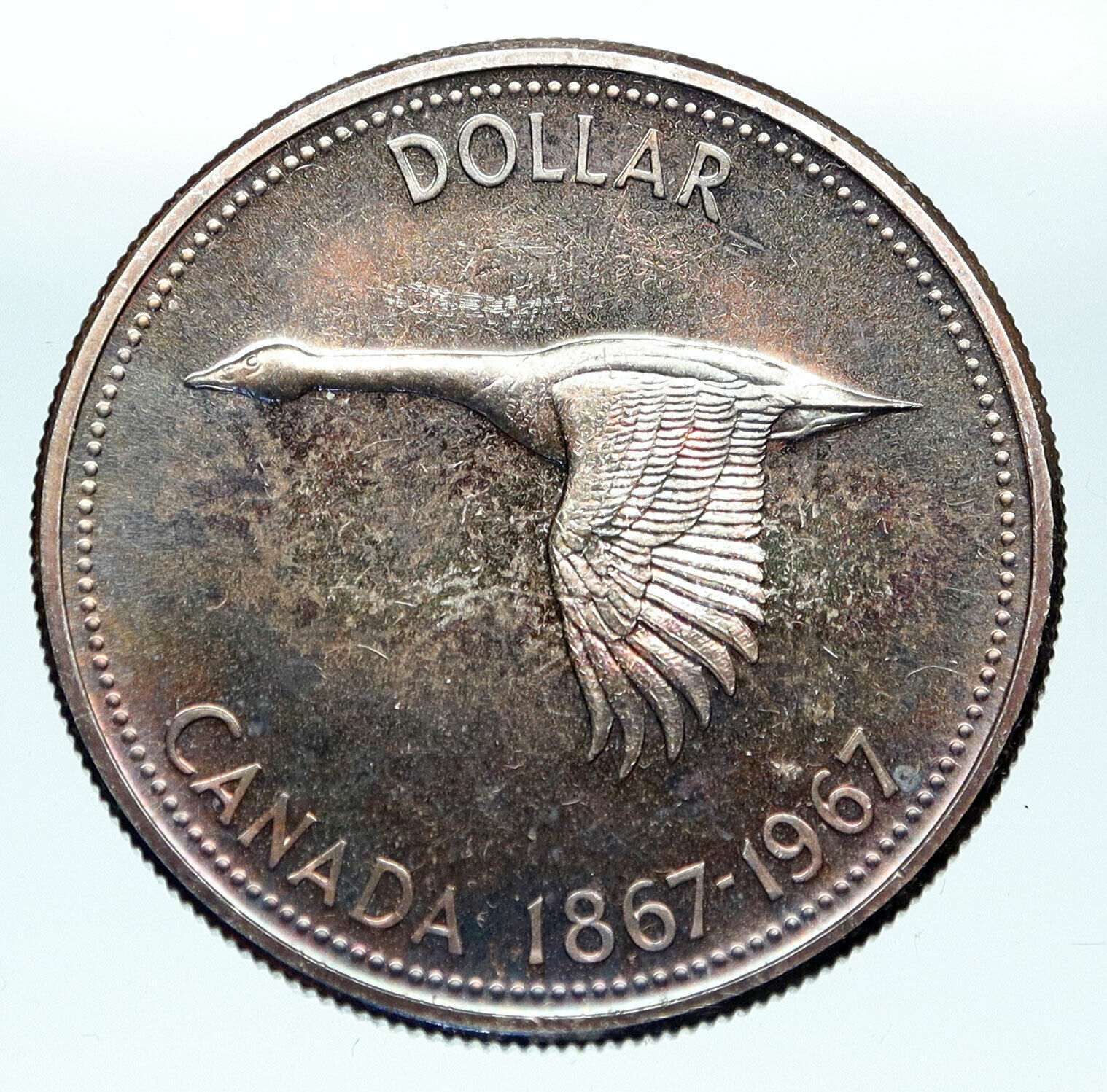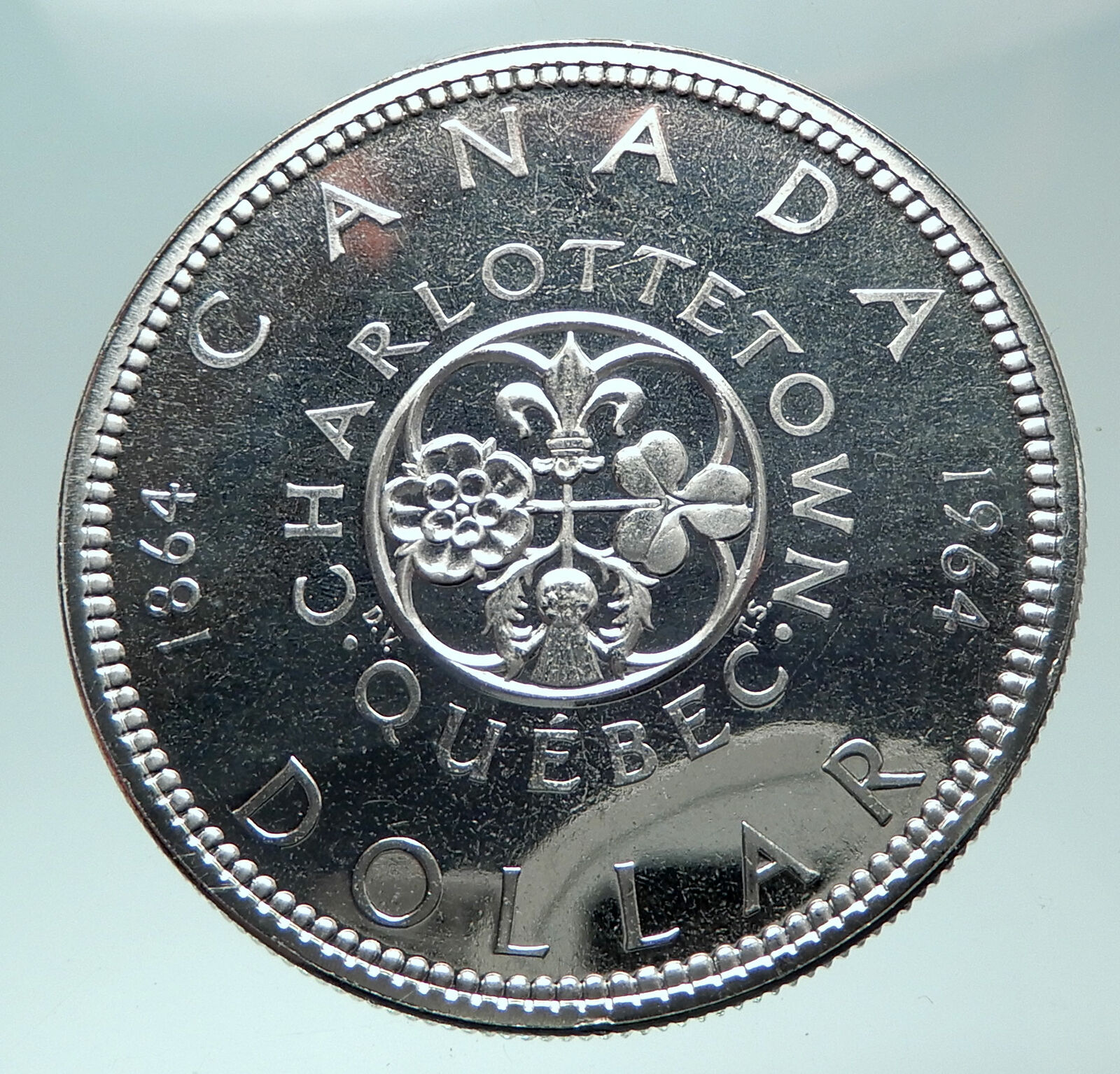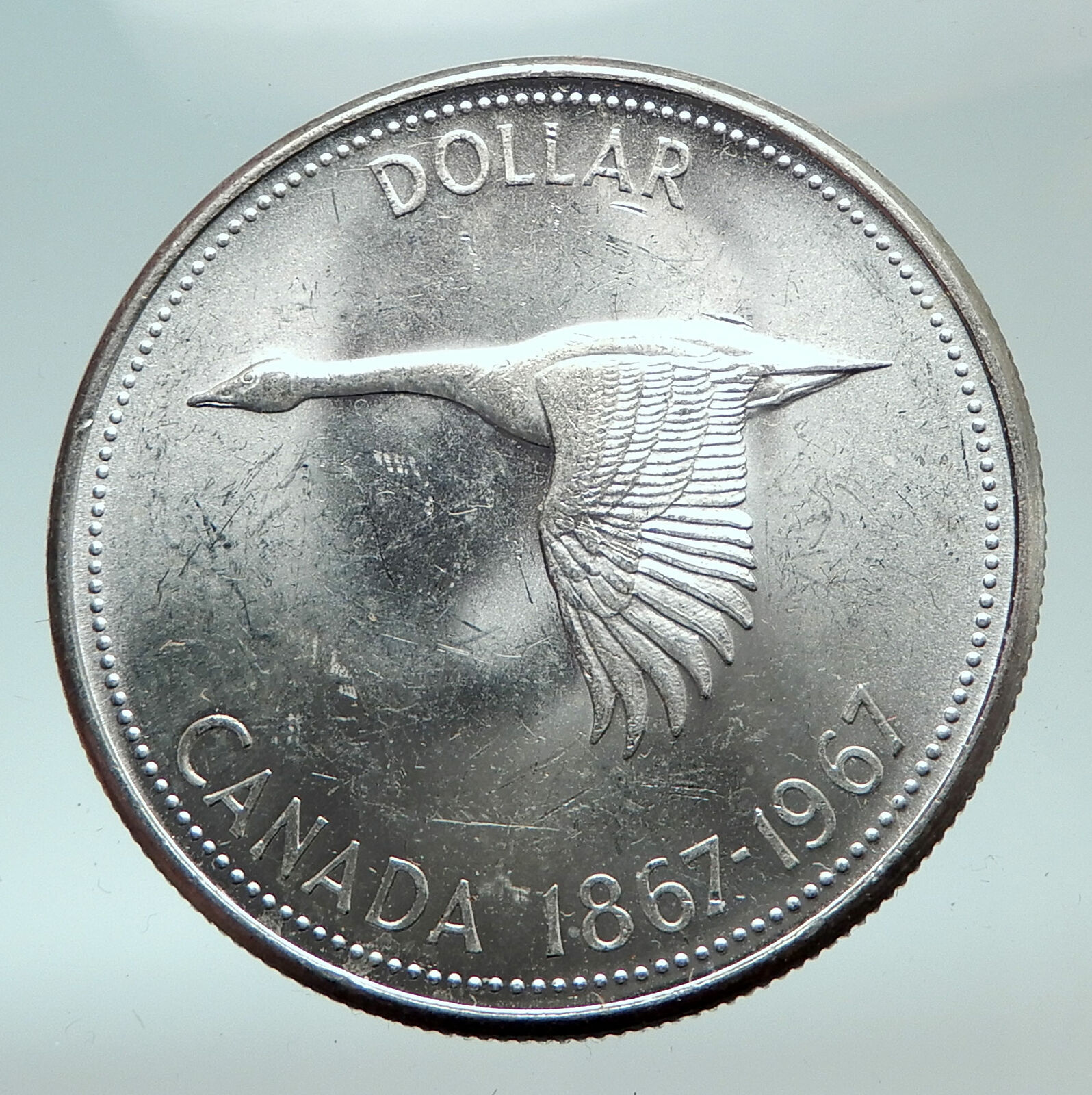|
Canada – Commemorative issue
100th Anniversary of the Accession of Prince Edward Island
1973 Proof-Like Nickel Dollar 32.13mm (15.62 grams)
Reference: Ch# RC-905, Schön# 77, KM# 82, Ch# RC-223a, Ch# RC-223b
ELIZABETH II D·G·REGINA, Bust of Queen Elizabeth II, as at 37 years of age, wearing tiara, facing right.
P.E.I.’s legislative building, Province House, is accompanied with the bilingual legend “PRINCE EDWARD ISLAND ÎLE DU PRINCE ÉDOUARD” and the dates “1873” and “1973” and is surrounded with the inscription “CANADA” and the face value.
You are bidding on the exact item pictured, provided with a Certificate of Authenticity and Lifetime Guarantee of Authenticity.
 Province House is where the Prince Edward Island Legislature, known as the Legislative Assembly of Prince Edward Island, has met since 1847. The building is located at the intersection of Richmond and Great George Streets in Charlottetown; it is Canada’s second-oldest seat of government. Province House is where the Prince Edward Island Legislature, known as the Legislative Assembly of Prince Edward Island, has met since 1847. The building is located at the intersection of Richmond and Great George Streets in Charlottetown; it is Canada’s second-oldest seat of government.
The cornerstone was laid in May 1843 and it commenced operation for the first time in January 1847. The entire structure was built for a cost of £10,000 and was designed by Isaac Smith. Smith was a self-trained architect from Yorkshire, who also designed the residence of the Lieutenant Governor of Prince Edward Island. It was built by Island craftsmen during a time of prosperity for the colony. Its architectural lines include Greek and Roman influences, common to public buildings in North America built during this era.
From September 1�”7, 1864, Province House had an important role in helping Prince Edward Island host the Charlottetown Conference which resulted in Canadian Confederation.
In 1973, Parks Canada approached the government of Prince Edward Island with a proposal for joint management and restoration of the structure in recognition of its important role in Canadian history. Under the ensuing agreement, both parties agreed to a 99-year period of joint management. Parks Canada paid for a $3.5 million (CAD) restoration from 1979�”1983 which involved part of the building being restored to the 1864 period. The provincial legislature occupies one end of the building, whereas the restored Confederation Chamber displays the room where the Charlottetown Conference meetings occurred.
On April 20, 1995, a powerful pipe bomb exploded beneath a wooden wheelchair ramp on the north side of Province House, destroying glass in windows and causing some minor structural damage. Several passersby were injured and the explosion occurred only five minutes after an entire class of school children on a tour of the building had passed through the area. The bombing occurred only one day after the Oklahoma City bombing and is considered to be a copycat action. Responsibility was claimed by a group calling itself Loki 7; however, a subsequent police investigation and criminal court case blamed a single individual, Roger Charles Bell.
In 2015, Province House was closed for repairs and conservation work, expected to take several years, with the legislature moved to the adjacent Hon. George Coles Building.[2] Parks Canada confirmed in May 2023 that it works had been delayed, and it would not reopen that year as planned.
Province House National Historic Site
Province House was designated a National Historic Site of Canada in 1973.[4] It is one of only three provincial legislative buildings, along with Province House in Halifax and the Saskatchewan Legislative Building in Regina, to be so designated. Province House is also designated under the provincial Heritage Places Protection Act.
Visitors can tour the 1860s period rooms, which include displays about the Charlottetown Conference, the building and the Provincial Legislative Assembly. An audio-visual presentation about the Conference is available, titled “A Great Dream”.
Monuments and memorials
In front of the Legislature on Grafton Street is the Charlottetown Veterans Memorial consisting of three soldiers. The bronze memorial by G. W. Hill commemorates the dead from the two World Wars and the Korean War.
A Boer War Memorial by Hamilton MacCarthy was erected to honour the members of the Royal Canadian Regiment on the side of legislature.
A series of plaques commemorating the province’s Fathers of Confederation are found along the side of the building:
- Edward Whelan
- Thomas Heath Haviland
- Edward Palmer
- John Hamilton Gray
- Andrew Archibald Macdonald
- William Henry Pope
- George Coles
A small statue of Eckhart the Mouse from David Weale’s children’s story The True Meaning of Crumbfest is also found on the grounds of legislature.
.svg/220px-Canada_(orthographic_projection).svg.png)  Canada is a country, consisting of ten provinces and three territories, in the northern part of the continent of North America. It extends from the Atlantic to the Pacific and northward into the Arctic Ocean, covering 9.98 million square kilometres (3.85 million square miles) in total, making it the world’s second-largest country by total area and the fourth-largest country by land area. Canada’s common border with the United States forms the world’s longest land border. Canada is sparsely populated overall, the majority of its land territory being dominated by forest and tundra as well as the mountain range of the Rocky Mountains; about four-fifths of the population live near to the southern border. The majority of Canada has a cold or severely cold winter climate, but southerly areas are warm in summer. Canada is a country, consisting of ten provinces and three territories, in the northern part of the continent of North America. It extends from the Atlantic to the Pacific and northward into the Arctic Ocean, covering 9.98 million square kilometres (3.85 million square miles) in total, making it the world’s second-largest country by total area and the fourth-largest country by land area. Canada’s common border with the United States forms the world’s longest land border. Canada is sparsely populated overall, the majority of its land territory being dominated by forest and tundra as well as the mountain range of the Rocky Mountains; about four-fifths of the population live near to the southern border. The majority of Canada has a cold or severely cold winter climate, but southerly areas are warm in summer.
The land now called Canada has been inhabited for millennia by various Aboriginal peoples. Beginning in the late 15th century, British and French colonies were established on the region’s Atlantic coast. As a consequence of various conflicts, the United Kingdom gained and lost North American territories until left, in the late 18th century, with what mostly comprises Canada today. Pursuant to the British North America Act, on July 1, 1867, three colonies joined to form the autonomous federal Dominion of Canada. This began an accretion of provinces and territories to the new self-governing Dominion. In 1931, Britain granted Canada near total independence with the Statute of Westminster 1931 and full sovereignty was attained when the Canada Act 1982 severed the vestiges of legal dependence on the British parliament.
Canada is a federal parliamentary democracy and a constitutional monarchy, Queen Elizabeth II being the current head of state. The country is officially bilingual at the federal level. It is one of the world’s most ethnically diverse and multicultural nations, the product of large-scale immigration from many countries, with a population of approximately 35 million as of 2015. Its advanced economy is the eleventh largest in the world, relying chiefly upon its abundant natural resources and well-developed international trade networks. Canada’s long and complex relationship with the United States has had a significant impact on its economy and culture.
Canada is a developed country and one of the wealthiest in the world, with the tenth highest nominal per capita income globally, and the eighth highest ranking in the Human Development Index. It ranks among the highest in international measurements of government transparency, civil liberties, quality of life, economic freedom, and education. Canada is a Commonwealth Realm member of the Commonwealth of Nations, a member of the Francophonie, and part of several major international and intergovernmental institutions or groupings including the North Atlantic Treaty Organization, the G8, the Group of Ten, the G20, the North American Free Trade Agreement and the Asia-Pacific Economic Cooperation forum.
|





 Province House is where the Prince Edward Island Legislature, known as the Legislative Assembly of Prince Edward Island, has met since 1847. The building is located at the intersection of Richmond and Great George Streets in Charlottetown; it is Canada’s second-oldest seat of government.
Province House is where the Prince Edward Island Legislature, known as the Legislative Assembly of Prince Edward Island, has met since 1847. The building is located at the intersection of Richmond and Great George Streets in Charlottetown; it is Canada’s second-oldest seat of government. .svg/220px-Canada_(orthographic_projection).svg.png)
 Canada is a country, consisting of ten provinces and three territories, in the northern part of the continent of North America. It extends from the Atlantic to the Pacific and northward into the Arctic Ocean, covering 9.98 million square kilometres (3.85 million square miles) in total, making it the world’s second-largest country by total area and the fourth-largest country by land area. Canada’s common border with the United States forms the world’s longest land border. Canada is sparsely populated overall, the majority of its land territory being dominated by forest and tundra as well as the mountain range of the Rocky Mountains; about four-fifths of the population live near to the southern border. The majority of Canada has a cold or severely cold winter climate, but southerly areas are warm in summer.
Canada is a country, consisting of ten provinces and three territories, in the northern part of the continent of North America. It extends from the Atlantic to the Pacific and northward into the Arctic Ocean, covering 9.98 million square kilometres (3.85 million square miles) in total, making it the world’s second-largest country by total area and the fourth-largest country by land area. Canada’s common border with the United States forms the world’s longest land border. Canada is sparsely populated overall, the majority of its land territory being dominated by forest and tundra as well as the mountain range of the Rocky Mountains; about four-fifths of the population live near to the southern border. The majority of Canada has a cold or severely cold winter climate, but southerly areas are warm in summer.




